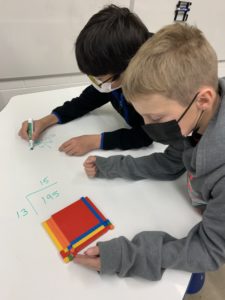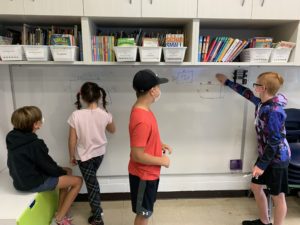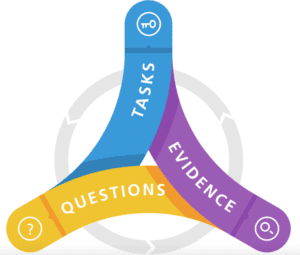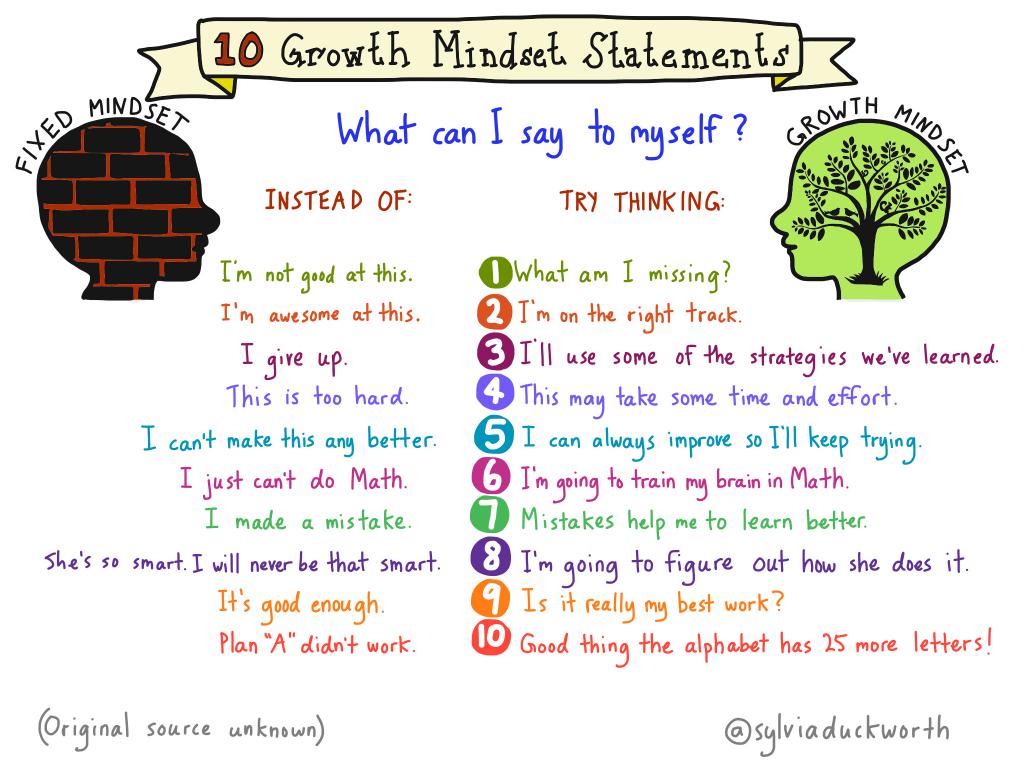 I love the image of a burr sticking to material, transported over distance and time all in an effort to reroot and grow in new areas. In many ways, learning follows this same path. When a new idea sticks, it is transported, passed on, and shared, leading to more growth. Too often our lessons become prescriptive and nothing sticks, leading to a ‘gotta cover the content’ mindset. This results in both the teacher and the learner struggling to understand key concepts that build on one another!
I love the image of a burr sticking to material, transported over distance and time all in an effort to reroot and grow in new areas. In many ways, learning follows this same path. When a new idea sticks, it is transported, passed on, and shared, leading to more growth. Too often our lessons become prescriptive and nothing sticks, leading to a ‘gotta cover the content’ mindset. This results in both the teacher and the learner struggling to understand key concepts that build on one another!
The idea of deep understanding is that meaningful lessons stick with our students. A “ploughing through” mindset focuses on due diligence as the main objective. Far too often we have to cover a huge amount of content from the program rather than going deep into understanding the why beneath.
As we can all attest, if any foundation is shaky, it all comes crumbling down pretty quickly, leading to commonly uttered statements like; ‘I don’t get it…’ or, ‘I’m no good at…’ and, perhaps the greatest of all, ‘when will I even need this stuff in real life?’ One of the subjects in our schools that best illustrates this lack of real-world connection is how we’ve been delivering math education for close to a century.
Creating understanding in math must begin at the elementary school level, yet educators that teach math at the lower levels miss opportunities for fostering deep understanding when following worksheets and textbooks too closely. In a recent conversation around this topic with Daphne Amster, an elementary math teacher who teaches at Edgewater Elementary of the Lester B. Pearson School Board, she explained how her own math-phobia began way back in her elementary school days.
Her math teacher at the time would say, ‘Just follow these steps!’ She explained that, “I would follow the steps, but I didn’t understand why I was doing what I was doing. And so it didn’t make sense to me, so it didn’t stick. And the more that the foundation was being built upon, I didn’t have a foundation because I had no deep connection or understanding of it. So my foundation was crumbling.”
This mindset followed her into her teaching career, as she began teaching the way she was taught. When her students began showing a lack of understanding for key mathematical concepts she just put her head down and continued to push forward. Abandoning a firm grasp on students’ understanding in an attempt to cover all the progressions of learning is a very common story from many elementary school teachers in math.
However, Daphne’s journey took a dramatic turn for the better through a professional development opportunity that focused on understanding as opposed to procedural and didactic ‘learning’.
One day a colleague of Daphne’s, Erica Lamothe, mentioned to her a professional development project that was a ‘a game changer’ as it focused on a conceptual approach to math rather than a procedural one. At the Math Summer Institute there was an environment for “teachers, and in turn students to make sense of their own learning.”
This meant taking on “…rich tasks, good questioning and supporting outcomes with evidence,” better known as the TQE process, which was created by Juli Dixon of the DNA math leaders. As Daphne further explains, “the whole mindset behind [TQE] is a shift in the culture of the classroom, where students are talking to students and students are providing the strategies and creating the context and doing the sense-making.”
Tasks: Teachers who have a deep understanding of mathematics select good tasks that lead to students’ conceptual and procedural knowledge.
Questioning: Teachers who have a deep understanding of mathematics use productive questions.
Evidence: Teachers who have a deep understanding of mathematics seek evidence of students’ learning through the formative assessment process.
This begins with a question that is “methodically chosen by the teacher with specific learning goals in mind.” With a rich task in mind, Daphne can anticipate common errors while coupling her strategies together to address them once students hit these common misunderstandings.
She points out “that’s where you focus on the errors and try to have the students work through them so that they can learn from their misconceptions… the teacher doesn’t scaffold, rather asks questions to prompt the students thinking.”
The TQE process hinges on conceptual learning and grasping the WHY beneath the surface. Students are supported in making meaningful connections, facilitating the creation of rich and deep comprehension of the world around us through a math lens. As Daphne aptly put it, “if you’re not understanding the purpose or the meaning behind it, it’s meaningless to you.”

Photo by Daphne Amster 2022
I asked Daphne how her classroom environment has changed since she began rethinking her math course. “Manipulatives [are] everywhere,” in her classroom so math becomes more tactical and real-life, where students can play with mathematical concepts through materials. This way, they physically connect to the learning.
Another strategy Daphne began using was to install whiteboards on all her walls and her tables. Students are able to stand or sit while they discuss, guess, problem-solve all while being able to easily erase ideas or mistakes. This powerful idea of embracing mistakes and the impermanent nature of the whiteboards really got her students excited about playing with math concepts. Errors were now respected and required for deeper understanding all in a non-threatening way because students could simply wipe away mistakes as they figured things out.
Daphne further explains that whiteboards act, “as a display of their strategies. [It was] a great visual for gallery walks and working out their problems so they could discuss.” She has observed that, “they’re not afraid to make mistakes because they could just wipe them away. Mistakes are really seen as an opportunity for learning and productive struggle becomes part of the classroom culture.”
Much of Daphne’s newfound confidence in her math class came from this professional development opportunity where she could watch in real-time as other teachers addressed common math mistakes. This allowed her to observe how they would question the students and gently guide them towards their own understanding of key concepts like fractions and place value.

Photo by Daphne Amster 2022
Adopting this teacher’s model not only propelled Daphne into loving math, but allowed her students to realize the why behind a mathematical formula without having to leaf through her textbook for the right answer. And get this: She now feels so much more comfortable teaching math. She explains, “that I don’t use textbooks because I have enough experience to be able to feel comfortable to develop my own research tasks and go from there.”
Some closing advice for teachers struggling with teaching math in their classrooms: Find a Math teacher whose class’ culture features productive struggle, problem-solving, rich tasks, questioning; A class that celebrates mistakes, discovery, or using manipulatives for hands-on learning! Watch them deliver a lesson, observe how they question without giving answers, or how understanding for all is the crux of the class versus centering solely on the content.
Then, it’s your turn! Film yourself giving a math lesson and deconstruct it along with a colleague or a consultant. Cultural shifts take time. It doesn’t happen overnight, but rest assured, as Daphne says, “the more we learn, the better we teach.”
References
Dixon, Nolan, Adams, et al. (2016). Making Sense of Mathematics for Teaching. Solution Tree. [book series]. https://www.solutiontree.com/ca/products/making-sense-of-mathematics-series.html







While I am not a math teacher, I ended up having to be one at home to my school-age daughter. We used manipulatives extensively at home, all the way through elementary. Most teachers stop using tactile learning tools after Cycle 1. However, developmentally speaking, students still need them for far longer to make sense of math concepts that, let’s face it, are quite abstract when divorced from their real world application. While method is certainly good to have (steps etc), it does not replace solid understanding, and being able to visualize the math in a real way. I would add that an in-between step for kids could be to draw pictograms of the problems they are trying to solve. I still do this.